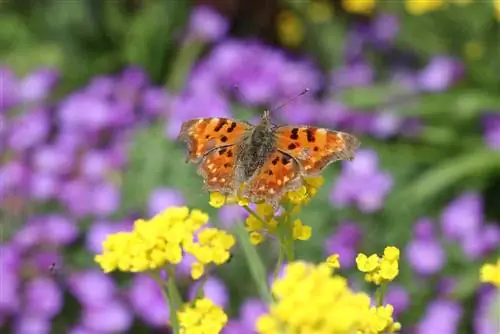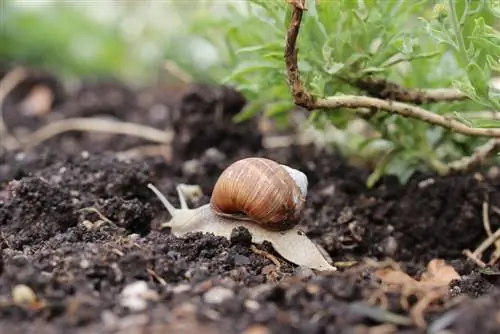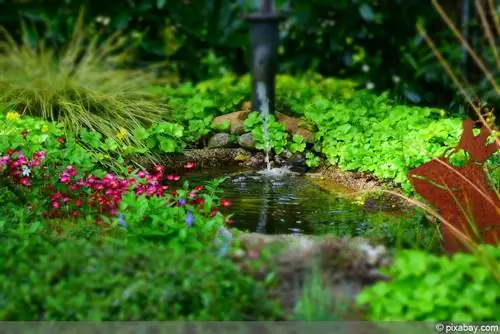- Author admin [email protected].
- Public 2023-12-17 03:39.
- Last modified 2025-01-24 12:45.
In the wild there is rarely an opportunity to take part in the reproduction of butterflies (Lepidoptera) and to be able to watch how the “offspring” develop into flying animals. Anyone who breeds butterflies themselves will be able to learn a lot about them, provided they do so carefully and correctly. In order to increase the chances of successful breeding, the following tips should be taken into account.
Compliant with the law
Before planning to breed butterflies, it should be noted that there are numerous protected species among butterflies whose capture in nature is prohibited by law. According to Section 39 of the Federal Nature Conservation Act, the capture of all animals living in the wild is not permitted unless there is an acceptable reason for doing so. In most cases, butterfly breeding is recognized as a sufficient reason. It is still advisable to check with the responsible nature conservation authority, because if things go wrong you could face severe pen alties. Anyone who wants to breed protected butterflies should always obtain official approval in advance.
First butterfly catch
Butterflies are needed to cause reproduction. If you have little to no experience, you should limit yourself exclusively to butterflies that are not subject to any special nature conservation, so as not to further reduce the population due to failed attempts at reproduction. Identifying the numerous species is often difficult. Here it is more optimal if only known butterflies are used for reproduction. These mainly include:
- Admiral (Vanessa atalanta)
- Painted Lady (Vanessa cardui)
- Great Oxeye (Maniola jurtina)
- Emperor's Mantle (Argynnis paphia)
- Little fox (Aglais urticae)
- Peacock butterfly (Inachis io)
- Lemon butterfly (Gonepteryx rhamni)
NOTE:
For catching butterflies, there are cheap special fishing devices available online that make catching them easy and at the same time prevent injuries to the flying animals.
Cage size
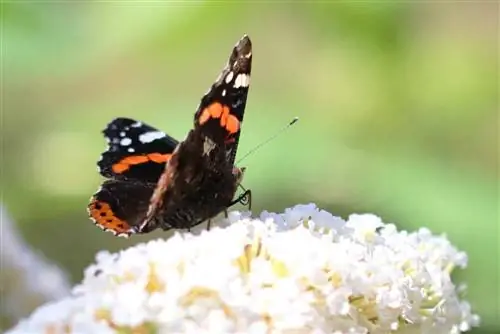
The basic requirement for permission to “take” butterflies is that a cage is available that allows the butterflies to fly freely. This is also necessary so that they feel comfortable, because mating will only work if they are kept in a species-appropriate manner. A cage should offer at least one cubic meter of space for every two butterflies. The bigger the better, because it also reduces the risk of the butterflies injuring themselves on the walls and especially grilles/mesh when flying around.
Air conditions/temperature
A Lepidoptera needs oxygen, but air is generally important for the habitat. It should be ensured that oxygen exchange is possible so that a sufficient supply of air prevents mold formation and excessive moisture. It is ideal if there is a humidity level that meets the requirements of the respective butterfly species. They should always be kept in a bright, but still slightly shady location. Direct, hot rays of sunlight should be avoided in any case. If the temperatures drop even further at night, a cage cover with a normal blanket and a location protected from the wind are advisable.
Butterfly count
Some butterfly species allow males and females to be distinguished by size, color, pattern or other unique characteristics. Otherwise, the gender can hardly or not be recognized at all when catching butterflies. Therefore, there should be several specimens in the free flight cage so that the chance of getting at least one male and one female increases.
Cage equipment
In principle, the best cage equipment is the one that comes closest to the Lepidoptera's habitat in the wild. Most important are:
- Plants for eating and laying eggs (use plants preferred by the butterfly species)
- Small, thin plant stems for approaching (only a few, so as not to reduce flight space - must not pose a risk of injury)
Detecting mating
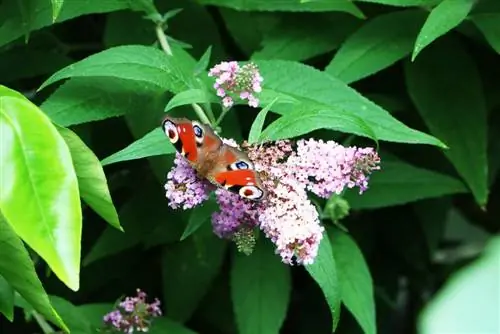
If you are interested in mating, you should pay close attention to the behavior of the butterflies. The first sign of a possible impending mating is the close flight behavior, as can be observed in most birds. During the mating itself, both rump to rump can be seen. They hardly move at all and usually stay in this position for several hours. Eggs are laid shortly afterwards.
Accelerate hatching
If the mating has worked and the eggs have been laid, it takes between eight days and five weeks for the caterpillars to hatch, depending on the ambient temperature. Warmer and, above all, consistently warm weather conditions day and night accelerate caterpillar development. The more the temperatures drop, the longer it takes to hatch. So even heat is optimal.
Releasing butterflies
Mating and especially egg laying take a toll on the parents. It is advisable to then release them back into the wild and into their natural habitat. The nature conservation law stipulates that they are released again where they were caught because there they return to the feeding places they were previously looking for.
Caterpillar incubator
If the free flight box is created in such a way that the caterpillars cannot go out and natural predators, such as parasitic wasps, cannot enter, the eggs or caterpillars can remain there. Otherwise, an additional fine-mesh insect net could be attached all around. Alternatively, you can also use a normal cardboard box on which an air-permeable fabric or fine mesh is stretched. If you prefer the simplest option, simply buy a butterfly breeding/incubator.
The following tips should also be taken into account:
- Caterpillars eat a lot - so make sure you have enough plants that suit your taste
- Eating a lot leads to a lot of excretion - lay out kitchen paper on the floor and change it daily
- Provide plant greens in water-filled container (ensures longer freshness)
- Always cover the water container, otherwise there is a risk of caterpillars falling in and drowning
- Do not provide wet leaves (risk of infection, especially with nettles)
- Always position fresh food next to “old” so that caterpillars can migrate over
- Make sure there are enough branches/stems on the green (for pupation)
Peace when pupating
Pupation slowly begins about four weeks after the eggs hatch. This can be recognized when the caterpillars suddenly stop crawling around. The start is signaled by hanging them on a fine, barely visible thread on which the caterpillars hang with their backsides upwards. They often choose the ceiling of their “brood box,” but they can also “stick” upside down to sturdier stems of their food plants. They remain motionless in this position for about 14 days. Then the doll's shell breaks open piece by piece. Once pupation is complete, development occurs, which takes around two to three hours. They then enter a short recovery phase to recover from the exertion.

Throughout the entire process, it is essential that important rules are adhered to:
- Keep calm - sudden loud noises or movements provoke a fall
- Do not touch - very high risk of injury during pupation
- Leave dropped copies
- Be sure to give yourself time to recover before releasing into nature
NOTE:
When the new butterfly is ready to take off, it secretes a red liquid shortly beforehand. This is a normal occurrence and no cause for alarm.
Injured, unfit butterflies
If a butterfly can't fly, unfortunately it can't be helped. The only thing that can be done is to put it on a flower in the garden or on the balcony and leave everything else to Mother Nature.
Underdeveloped butterflies
In most cases, underdeveloped butterflies arise when the pupal shell bursts open too early and development is not yet complete. These butterflies can be helped by “raising them by hand”. To do this, proceed as follows:
- Provide drinking or preserving jar
- Mix regular honey with water (ratio 1:5)
- Dip cotton wool into the mixture and let it soak up
- Cover the bottom of the glass with the cotton wool
- Carefully place the butterfly on the cotton to eat
- Always keep cotton wool moist with a honey-water mixture
- Provide protection from natural enemies (ideally: place glass in an “incubator”)
- Patience is required: they eat little and development takes time
Touch the butterfly properly
If it is necessary to place a butterfly on cotton wool soaked in honey water, for example, it should be handled correctly in order not to injure it and, above all, not to damage its ability to fly. That's why a butterfly should only be touched from the front by the wing roots so that it can still fold up its wings. The points are grasped with the thumb and forefinger so that the Lepidoptera can be moved in this way. The wings must not be touched.
NOTE:
If you can avoid it, it's best not to touch the butterfly at all.

